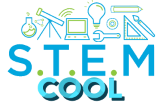
The fun, hands-on physical science lessons/experiments in these books teach science principles found in state and national science standards. Students also learn and practice critical thinking through the application of the scientific method of investigation. Each activity is a 10- to 30-minute guided experiment in which students are prompted to verbalize their step-by-step observations, predictions, and conclusions. Reproducible pictures or charts are included when needed, but the focus is inquiry-based, hands-on science.
Preparation time is short, and most materials can be found around the classroom. Step-by-step procedures, questions, answer guidelines, and clear illustrations are provided. Practical applications at the end of each activity relate science concepts to real-life experiences. These activities can be used successfully with a minimum of science knowledge, preparation time, and science equipment. The lessons/experiments teach science following these four important educational themes:
- Science can and should motivate students toward learning and toward developing curiosity about the world in which they live.
- Science is viewed as an active process of developing ideas, or "storybuilding," rather than as static bodies of already-existing knowledge to be passed on to students. Instead of merely describing what is taking place, the teacher guides the students through an inquiry process by asking pertinent, open-ended questions and by encouraging investigative process through demonstration, hands-on opportunities, and extension of experiments.
- Students are encouraged to observe and describe their observations accurately and completely using scientific terminology. Scientific terms are defined, demonstrated with concrete examples, then applied and reinforced throughout the activities.
- An open, interactive atmosphere in the classroom is essential. Students and their teacher actively investigate ideas together (compared to a passive learning situation in which students are merely told the problem, given the answers, and expected to memorize the information.) Through observation, hands-on participation, and verbalization of the physical and thought processes, students build a more concrete understanding of the concepts taught in the activities. With the teacher's help, students can learn to apply these same analytic and problem-solving skills to their other studies and to any classroom or social problems that might arise.
Book 1 (Grades 1-3) Units:
• Observing
• Water
• Buoyancy and Surface Tension
• Air
• Moving Air—Air Pressure
• Force
• Space, Light, and Shadows
Book 2 (Grades 4-8) Units:
• Process Skills
• Force, Movement, Work, Systems, and Weight
• States of Matter
• Mass, Volume, and Density
• Air Pressure & Pressure of the Atmosphere
• Heat, Expansion, and the Movement of Molecules
• Transfer of Heat
• Flight and Aerodynamics
• The Speed of Falling Bodies
• Variables
• The Flight of Rockets
• Inertia and the Flight of Satellites
• Surface Tension and Bubbles
• Sound
• Reflection and Refraction of Light
• Magnetism and Electricity
No products found in this collection.





